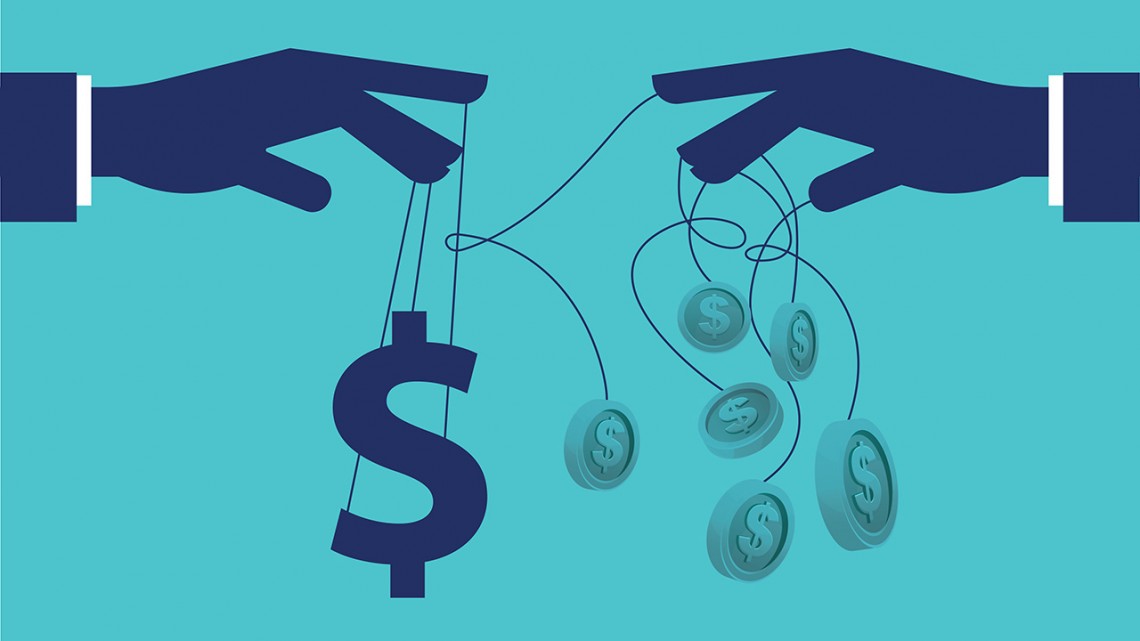
Network shifts signaled financial crisis – and may prevent another
By Susan Kelley
Ever since the devastating financial crisis of 2008, researchers have been probing the financial markets to understand what went wrong and how to prevent another crippling recession.
A Cornell statistician and his colleagues have found some tantalizing answers to those questions, by analyzing the crisis in a novel way. Rather than looking at the financial markets’ networks one at a time, they mapped out whether and how two specific networks interacted as the crisis evolved.
During the crisis, European banks stopped lending to each other, while their stock prices became highly correlated – a significant deviation from the two networks’ normal interaction, according to the study. The finding offers insights into how to tell if another financial crisis is starting to brew in the future. The research, “Interconnectedness in the Interbank Market,” will appear in a future issue of the Journal of Financial Economics.
“The interbank market provides information on financial markets and the real economy that compliments the information derived from public stock returns,” said co-author Shawn Mankad, assistant professor of operations, technology and information management at the Samuel Curtis Johnson Graduate School of Management. “The work suggests both of these data sources should be utilized in early warning systems or any type of prediction model.”
Leveraging recent advances in network analysis, Mankad and his colleagues studied the behavior of the European interbank market, in which banks lend and borrow from each other, before, during and after the 2008 financial crisis. To define the market more clearly, they created two new terms to describe two networks: the correlation network of banks’ stock returns, and the physical network of interbank trading.
Describing the correlation network, Mankad said: “If the stock prices of, say, Bank of America and JPMorgan Chase are moving together sufficiently on a graph, then we say they’re highly correlated.”
And the physical network of interbank trading is comprised of transactions between banks that lend and borrow from each other. “If JPMorgan says, ‘We need money to meet our obligations,’ they borrow money from Bank of America at certain rate on the overnight market,” Mankad said. “We can observe that through the data and that’s a way of constructing the physical network.”
The researchers examined how each network’s inner connections were affected by shocks related to the European Central Bank’s interventions and operations.
They found that, before the crisis, each network had a similar number of internal connections. But during the crisis, the networks began to behave in very different ways. The correlation network became increasingly interconnected, with more tightly bound connections. “Stock prices became super correlated because everyone was selling their stocks at the same time,” Mankad said. “So the correlation network was a big ball of connections.”
At the same time, the physical network’s inner connections dropped significantly. Banks were less likely to lend to other banks, because they doubted they would ever get paid back. That led to fewer connections in the network, impairing interbank liquidity.
The researchers also found that the two networks respond differently to monetary and economic shocks. The physical networks adjusted strongly and quickly when the European Central Bank intervened in the crisis to promote funding and market liquidity. But the correlation networks did not.
The researchers further compared the networks to test whether interconnectedness measures could be used to forecast short term economic conditions, such as unemployment rates and industrial production. They found the correlation networks can identify and forecast periods of impending financial crisis. And physical interbank trading networks can identify weakening interconnections in the interbank system that may lead to liquidity problems.
That’s because banks have their own confidential information that they bring into the interbank market, Mankad said. “Even if you’re working at a stock exchange, you can’t tell from stock prices if a bank is borrowing money or not. So we showed theoretically that there may be some additional information in the physical network.”
The work has implications for how to predict future crises. It suggests regulators that analyze physical network data for weaknesses in the financial markets, such as the European Central Bank and the Federal Reserve, are doing the right thing.
The research also suggests stock exchanges could perhaps release aggregate statistics that indicate how the entire market is operating, Mankad said. “That could be useful for individual investors because it could serve as part of an early warning system that would tell you something about whether you’re entering a crisis period or not.”
Mankad wrote the paper with Celso Brunetti of the Federal Reserve Board, Jeff Harris of American University and George Michailidis of the University of Michigan. The research was supported by the National Science Foundation.
Media Contact
Get Cornell news delivered right to your inbox.
Subscribe
